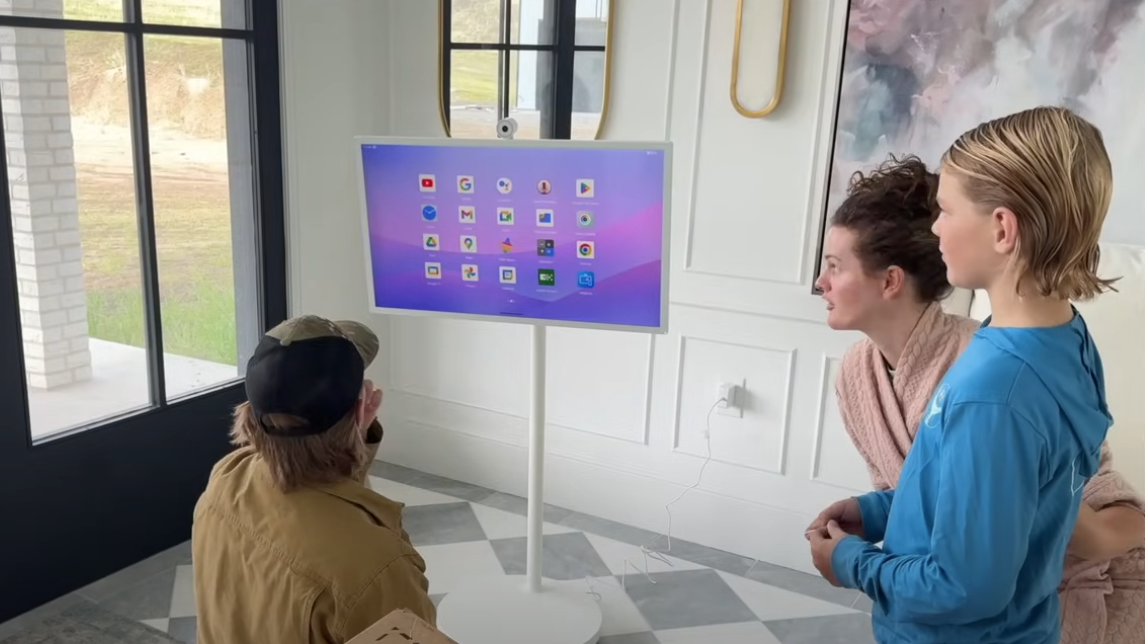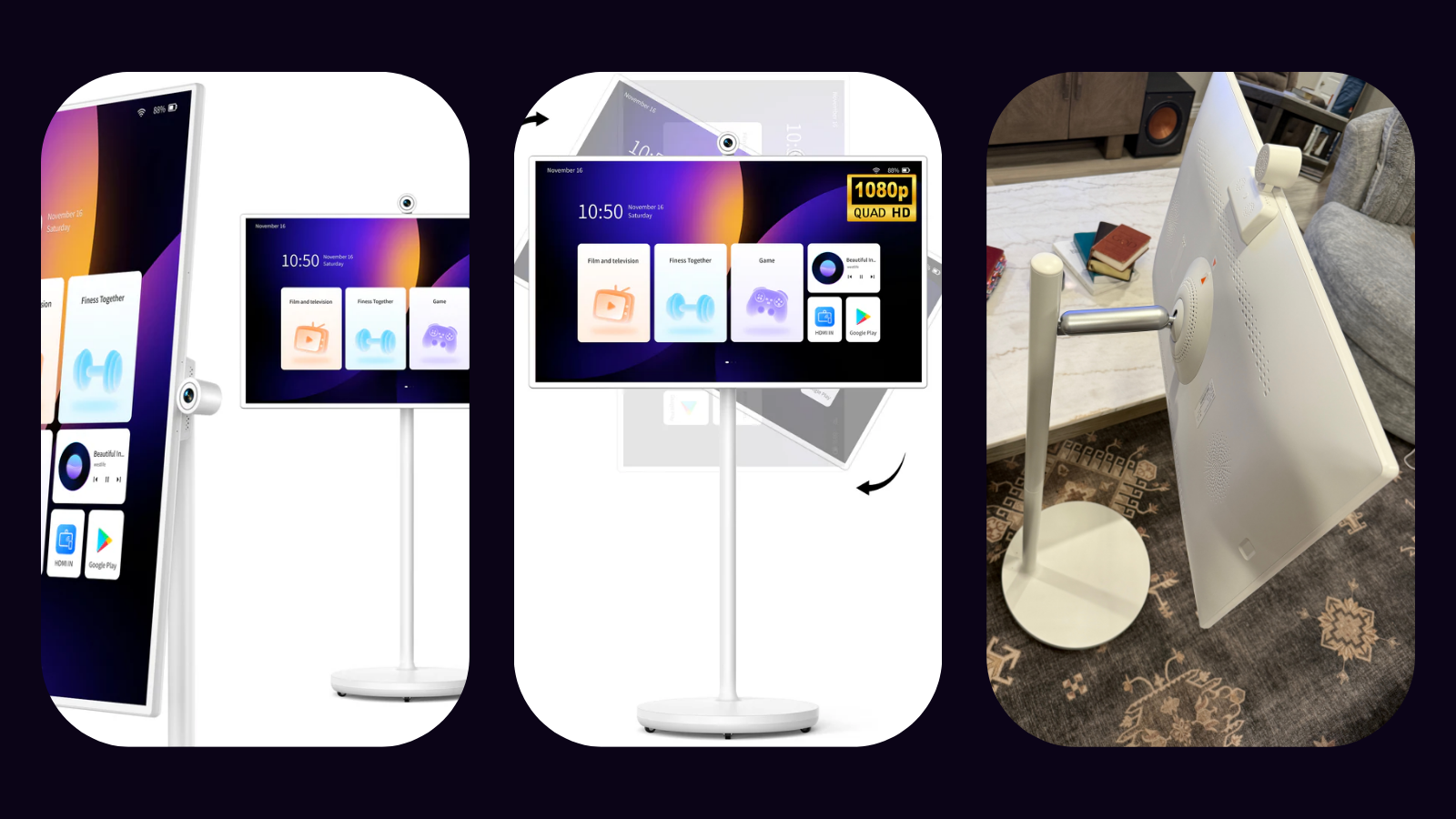Table of Contents
With an early adaptation to technology, we see how mobility in technology means movement. With that, the portable TVs are the new talk of the town, and that’s for a reason. We see how the custom LCD display has shaped the market of consumers who are eagerly waiting to buy this. Whether it be powering a business presentation, delivering patient education in hospitals, or simply making classrooms even brighter than ever, these mobile screens are becoming an essential tool all over the industry.
But behind every crisp and smooth image you see, there is one crucial component that takes all, which is the display, and that’s precisely where LCD screens step into the right spot.
Having a wide range of screen technologies available, such as OLED and LED, you might be questioning why so many manufacturers still rely on LCD for portable TVs. For that, we will let the number decide, because as of the research results, the Portable TVs Market size is estimated to be USD 1.2 billion in 2024 and is expected to reach USD 2.5 billion by 2033 at a CAGR of 9.2% from 2026 to 2033.
In this article, we will be looking at the comparison of screen types, highlighting why LCD is the optimal choice for performance and pricing, and showing how an interesting LCD display powers up the next generation of wireless TVs on wheels.

LCD vs OLED: Which Is Better?
When putting screens in comparison with wireless TVs on wheels, the two most commonly compared are the LCD and OLED. Each one of them has its separate strength, but for the TVs on wheels, LCD is prioritized the most in areas such as durability, cost-efficiency, and energy usage.
1. Technology
LCD is powered by a backlight that shines through various liquid crystals to produce an image. In contrast, OLEDs generate light at the pixel level, allowing for individually lit pixels to be higher and sharper.
While the OLED might appear unique on paper, it needs a complex manufacturing process, and with the fast material decomposition over time, it reduces its life expectancy as you anticipated.
LCD, by comparison, has mature manufacturing lines, longer operational lifespans, and better temperature stability, making it a more practical choice for mobile or commercial-grade applications.
2. Picture Quality
OLEDS are often known for their fine blacks and ultra-thin profiles. However, modern LCDs have filled the gap with LED-backlit and IPS panel technologies that offer vibrant colors, sharp details, and wide viewing angles.
For movable TVs used in well-lit environments such as classrooms or retail stores, LCD maintains much better visibility, vision, clarity, and sharpness due to having a high brightness threshold when compared to OLEDs, which can struggle when a light is directly contacted.
3. Color Accuracy
LCD panels, particularly IPS LCDs, offer excellent color accuracy, which is crucial for environments where visual content matters, like exhibitions or corporate presentations. Additionally, LCDs handle static images better, with no risk of burn-in, a common problem for OLED panels when used in signage or repeating display patterns.

4. Contrast Ratio
In all of this, OLED wins in contrast due to its ability to turn off individual pixels. But when evaluating practical application, especially on a large-screen portable device, LCDs’ high brightness and anti-glare coatings offer much more value than the standard black ones.
5. Price
This is perhaps the most crucial factor. LCD displays are significantly more affordable than OLEDs, mainly when producing devices in bulk or customizing displays for OEM/ODM purposes. The lower price doesn't compromise quality, thanks to the advanced evolution of LCD panel tech over the last decade.
6. Other Factors
- Durability: LCDs handle vibrations, temperature changes, and physical movement better.
- Power Consumption: While OLED can be power-efficient in dark-mode interfaces, LCDs are generally more consistent in real-world energy usage, especially in static or bright applications.
- Lifespan: LCDs boast a longer usable lifespan, ideal for commercial-grade portable TVs that are powered on for long durations.
See how portable TVs are a game changer
Advantages of an LCD Screen Portable TV on Wheels
Selecting an LCD display for your portable smart TV with wifi isn’t just a matter of price; it’s a decision based on performance, reliability, and use-case compatibility. Here are the key reasons why LCDs take the lead in this segment.
In the age of AI, LCD technology is making a strong comeback. With its high resolution and low power use, it’s a great choice for smart devices. When combined with AI features like image recognition and adaptive brightness, LCD screens can offer smarter interactions and better visuals. ——By Chris Brown
1. Price Efficiency
LCD panels are made in massive quantities and have a global supply chain, which makes them more affordable. This is crucial for companies that are purchasing multiple units or working within a specific budget, whether it be for schools, hotels, or even hospitals. For OEM/ODM clients, this also means the ability to customize without blowing through R&D budgets.
2. Color Reproduction and Brightness
There’s no denying the fact that modern LCDs offer the right balance of color placement, ideal for use in environments where an accurate visual matters the most, so if you are using your TV for educational purposes, product demonstration, or for digital signage, LCD delivers with the sharp visuals. With anti-glare coatings and high nits ratings, LCDs remain visible even under direct indoor lighting, unlike OLEDs, which can reflect more ambiance.
3. Quality and Durability
LCDs are prone to degrade with the passage of time and with frequent movement, power cycling, and varied usage environments. In a TV on wheels, the screen can be pushed from room to room or carried by multiple users effortlessly. LCD panels with tempered glass covers and robust enclosures are better suited for this than the fragile OLEDs.
They’re also less sensitive to image retention or burn-in, making them ideal for displaying logos or static UIs for hours on end.
4. Versatility in Size and Resolution
LCDs are widely available in custom sizes and resolutions, so if you have plans to build a 32-inch educational display or a 65-inch corporate smart board, LCD panels are likely to be customized to fit your preference without compromising on the performance.
Additionally, LCDs pair well with touch capabilities, turning your portable TV into a smart interactive panel with built-in WiFi and wireless controls.
OEM/ODM of Portable TV on Wheels
So, when you are building a portable smart TV for your unique purpose, off-the-shelf models may not be the proper cut for it, which is why OEM (Original Equipment Manufacturing) and ODM (Original Design Manufacturing) services are pretty popular in high demand, and here’s where LCD becomes the perfect choice for customized manufacturing.

Why LCD Works for OEM/ODM
From Corporate AV room setups to hospital bedside displays, LCDs offer a more adaptable platform for innovative, mobile, and branded TV solutions, which is why they work perfectly for portable TV on wheels OEM and ODM Below are the stated reasons:
- Scalability: LCD technology is mature and offers high-volume supply chains that enable manufacturers to customize easily.
- Custom Specs: You can customize screen size, bezel thickness, housing material, ports, resolution, and backlight type to match your target audience.
- Reliable Integration: LCD panels integrate well with smart boards, touch sensors, Android OS, or WiFi modules, making the development cycle faster.
- Competitive Pricing: LCD allows OEM partners to stay cost-competitive without sacrificing reliability, which is especially crucial when bidding for B2B tenders or institutional projects.
GFF Portable TV on Wheels Manufacturer
When it comes to sourcing a reliable partner for portable TV on wheels, GFF stands out as a top-tier manufacturer with deep expertise in LCD technology, embedded systems, and industrial design.

Why GFF?
- In-house R&D: GFF doesn’t just assemble parts—they engineer solutions. Their in-house R&D enables complete control over hardware customization, innovative features, and touch integration.
- Custom LCD Display Options: Whether you want a 1080p or 4K display, anti-glare or tempered glass, or different form factors, GFF provides full-spectrum customization.
- Wireless & Smart Features: GFF units are compatible with WiFi, Bluetooth, Android OS, and touch interface panels, perfect for commercial, medical, or educational environments.
- Quality Control: With ISO-certified processes and rigorous testing, GFF ensures every unit meets global standards for durability, safety, and performance.
So if you are looking to roll out an entire presentation or looking for mobile classroom boards, GFF offers the right scalable solution that’s affordable and high-performing.
Conclusion
On the other hand, where OLED captures your attention for premium home TVs, LCD remains the pinnacle choice for portable TVs on wheels. For numerous reasons, it is the ideal solution for commercial and enterprise purposes. So if your aim is outfitting hospitals, classrooms, or presenting your yearly report with the sales target, LCD displays consistently deliver where it counts the most. And by partnering with a reputable manufacturer such as GFF, you gain access to a fully functional ecosystem of customization, innovative technology integration, technical support, and long-term product reliability. Get a quote now!





